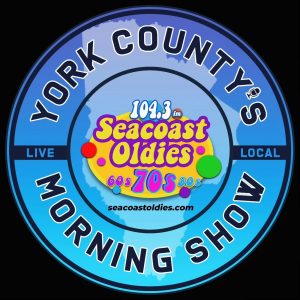Fire Department Log: November 28-December 31, 2021
- January 9th 2022
- Public Safety
- Emergency Medical Services Sanford Fire Department
Fires
In the almost five-week period covered by this report, there were a number of fires to which the Sanford Fire Department responded. In the early hours of December 3, a vehicle on fire on Main St. at Cabana’s Auto Body brought five units out. The fire has been ruled arson, and is being investigated by the state Fire Marshal’s office. Later that day, five units responded to a stovetop cooking fire on Lenox St. The blaze was confined to the cooking container.
On December 9, all units plus mutual aid from other departments responded to a mid-afternoon garage fire on Shaw Rd. The black smoke was visible for some distance. The home was also damaged, but fortunately no injuries were reported.
In addition, there were more than the usual number of calls for mutual aid to other communities. On November 30, there was a building fire in Lebanon and a chimney fire in North Berwick, December 21 there were fires in Wells and Rochester, and December 27 there was another fire in Wells.
Other Incidents
On December 8, a faulty wood stove on Webster St. created quite a bit of smoke but the fire was contained. On December 10, Engine 4 responded to Brook St. where an outdoor fire was burning improper items. One call was for a smoke odor, while another was steam, vapor, fog or dust thought to be smoke. There were two other reports of unauthorized burning during the period, as well as two calls for authorized controlled burning.
The Department responded to two spills of gasoline or other flammable liquids, one spill of oil or combustible liquid, and five leaks of natural or LP gas. Two other calls were described as toxic conditions, and one call was for a water problem.
Sanford firefighters were called out to three downed power lines, and one electrical wiring or equipment problem.
Five units responded to an aircraft emergency at the Sanford Seacoast Regional Airport on December 12. The plane was able to land without incident.
EMS
There were 267 calls for emergency medical services during the period. 72 people received first aid, 138 received basic life support and 93 received advanced life support. (Some received more than one type of service.) 226 people were transported to hospitals.
There were three calls for medical crew assistance and one described as other emergency medical service. On one call, a person was transported by someone other than the Fire Department. Twenty invalids were assisted and one person was removed from a stalled elevator.
The Department responded to six motor vehicle accidents with injuries and two accidents involving a motor vehicle and a pedestrian. It also responded to 11 motor vehicle accidents without injuries.
Other
During the period, there were 27 alarms or system activations that were either unintentional or caused by a malfunction. There were eight calls dispatched and then cancelled en route, and seven where no incident was found upon arrival. Two calls are described as “good intent call, other.”
The Department had one call for a wind storm assessment and fielded two citizen complaints.
Firefighter Cancer Awareness
January is Fire Fighter Cancer Awareness Month. Did you know cancer is the #1 cause of firefighter line-of-duty deaths and is often under-recognized? Firefighters can be exposed to hundreds of different chemicals, some of which are known or suspected to cause cancer. Modern structures contain many materials that create smoke and release more carcinogens when burning than natural materials. Many firefighters come into contact with the chemicals by breathing them in, getting them on their skin or in their eyes, or ingesting them. Even through personal protective equipment, these chemicals can still be absorbed by the skin.
Cancer prevention is a complicated task involved numerous practices, which include cleaning and decontaminating of gear, showering and changing as quickly as possible afterward, reducing exposure to diesel exhaust, setting the air pressure in the living quarters higher than in the apparatus bay to prevent airborne chemicals from entering, and dividing the fire station into three zones to reduce exposure to cancer-causing chemicals. The hot zone is for contaminated items that need to be cleaned; the cold zone is the living quarters, which contaminated items should never enter; and the warm zone is the transition area between them.






